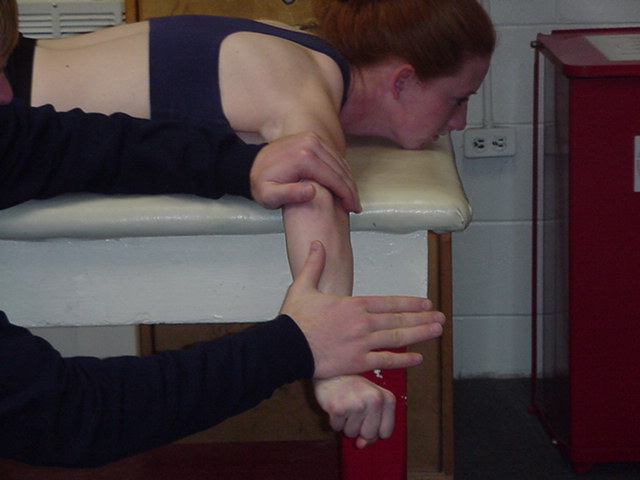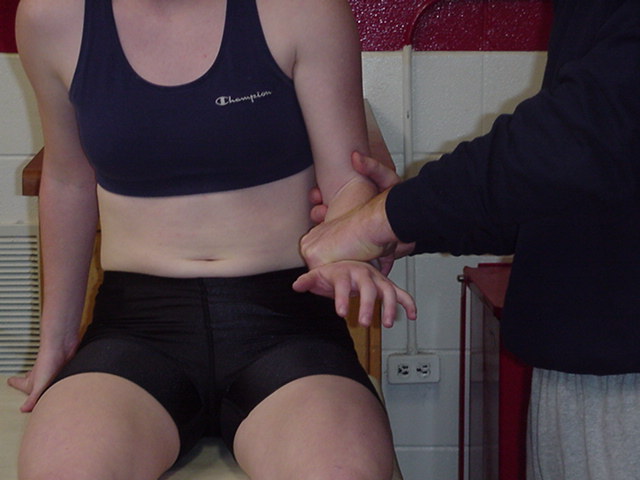| Elbow Flexion |
The patient should be short sitting with arms at side. The
therapist stands in front of patient toward the test side. The hand giving
resistance is contoured over the flexor surface of the forearm proximal to
the wrist, and the other hand applies a counterforce by cupping the palm
over the anterior superior surface of the shoulder. |
 |
| Elbow Extension |
The patient should be prone on a table with the arm abducted
90 degrees, and the forearm flexed and hanging vertically over the side of
the table. The examiner should provide support just above the elbow with
one hand, and with the other hand he should apply a downward resistance on
the dorsal side of the wrist. |
 |
| Forearm
Pronation |
The patient sits on a table with arms at side and elbow bent
at 90 degrees on test arm. The forearm should be in neutral. The examiner
stands at side or in front of patient. One hand supports the elbow of the
patient and the other hand grasps the forearm on the volar surface at the
wrist, for resistance. |
 |
| Forearm Supination |
The patient sits on a table with arms at side and elbow bent
at 90 degrees on test arm. The forearm should be in neutral. The examiner
stands at side or in front of patient. One hand supports the elbow of the
patient and the other hand grasps the forearm on the dorsal surface at the
wrist, for resistance. |
 |
Hislop, Helen J. & Montgomery, Jaqueline with
contributor Barbara Connelly.



